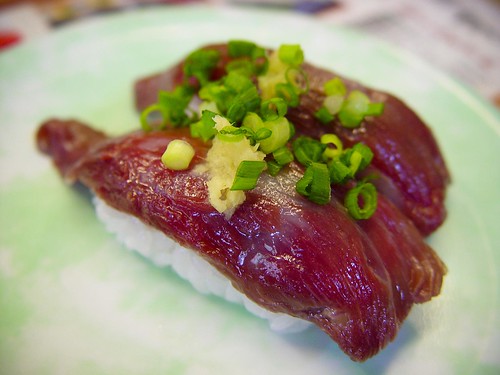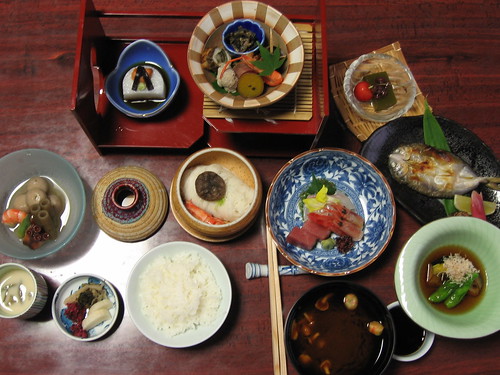What are some must-know Japanese food facts?
Well, there are plenty.
Japan is a top travel destination for many reasons… including the food.
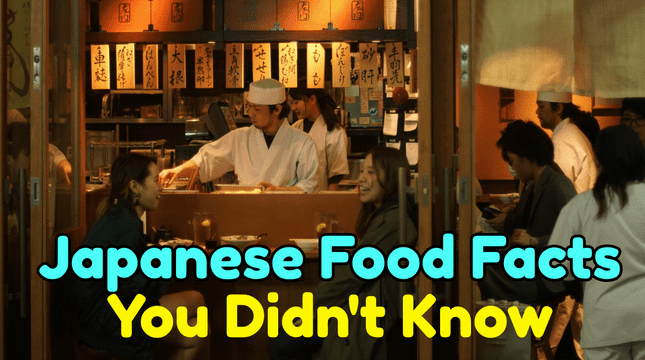
So, what’s so special about Japanese cuisine? In this guide, you’ll learn some Japanese food facts!
Let’s take a look.
Fish is used in most Japanese dishes
This may be one of the more obvious Japanese food facts here.

Japan is an island nation, so of course, fish would be common.
It’s difficult not to eat fish in most Japanese food, which can be particularly problematic for vegans and vegetarians. Even if the food doesn’t contain chunks of fish, the broth or base flavor of many dishes is made with fish broth. Fish is one of the main reasons Japanese cuisine has a distinct umami flavor.
Every region has a distinct food culture
Although Japan is just slightly larger than Germany in land area, every region has their own distinct food culture.
One of the most enjoyable aspects of traveling in Japan is that you can eat something special from every place you visit. If you visit Osaka, you’ll find all kinds of street unique Japanese foods like takoyaki and okonomiyaki. In Kobe, you’ll find delicious Kobe beef or Akashiyaki.
Focus on seasonality
Along with distinct regions, Japanese cuisine reflects the seasons.
Japanese people will eat more soups, hotpots, and warm dishes during the cold months, like “Oden.” In the Summer, dishes like cold somen noodles with ice are popular. During spring-time, you’ll see cherry-blossom related food and drinks. In the fall, you’ll see persimmons. Of course, that’s just scratching the surface – there’s lots more.
Even with fast food. For example, if you go to a McDonald’s in Japan, you’ll notice seasonal menu items that use seasonal ingredients.
Japanese food is not spicy
If you’re wondering if there are any spicy Japanese foods…
Well, traditional Japanese food is usually not spicy. So, no.
And the spicy foods that DO exist… they are often of non-Japanese origin.
The flavors of Japanese food tend to be mild and straightforward. Japanese cuisine values the taste of authentic ingredients instead of flavoring them with strong spices. This is why many people in Japan cannot handle very spicy food. And why you there’s a world of a difference between sushi you’ll have in Japan and say in the US (see Japanese Sushi vs American Sushi).
Speaking of Sushi…
Sushi was initially meant to preserve fish

When sushi was first invented, it was a preservation method so that the fish and rice wouldn’t spoil.
The first sushi was a combination of fermented rice and fish. These days, people enjoy sushi as a fresh eating experience. However, you’ll still notice that the rice is always vinegared.
Soybeans are everywhere
Many Japanese dishes use soybeans as a base.
Soysauce, miso paste (fermented soybean paste), natto (fermented soybeans — considered a super food), and tofu are all made with soybeans. These condiments and ingredients are vegan-friendly and full of health benefits.
Japanese meals are well-balanced
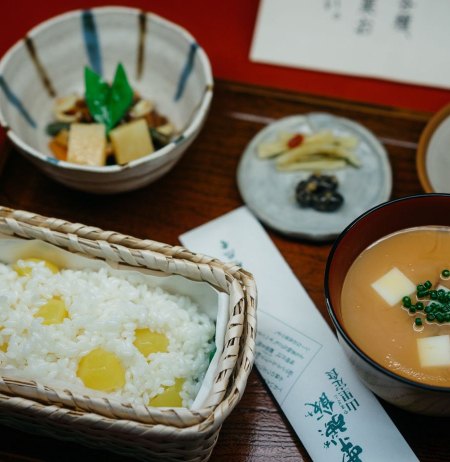
Traditional Japanese cuisine focuses on being well-balanced.
You’ll find rice, pickles, soup, and several dishes in a typical meal. This eating style is well-balanced because you can eat many different types of ingredients in one meal. It’s also easier to be satisfied after eating because you feel like you’re eating a lot. Still, each part of the meal is relatively small.
The Japanese word for rice means food
Many Japanese people eat rice several times a day, and rice is a staple in their diet.
In Japanese, the word for food (gohan – ご飯) also means rice because it is such a central part of every meal. In most Japanese households, families will cook many side dishes with rice.
Ramen originally came from China

Ramen has become known worldwide as part of Japanese cuisine. But, it was brought to Japan by Chinese immigrants in the 1900s. As it spread in Japan, new takes on the Chinese dish developed, making it into what it is today. There are distinct Japanese flavors like tonkotsu ramen and miso ramen.
Most wasabi is not real wasabi
Most wasabi you’ll encounter is likely not real wasabi.
Real wasabi is hard to cultivate because it requires clean and pure water. Before chefs serve the wasabi, it needs to be freshly grated. Real wasabi is not as spicy and strong as the “fake” wasabi and allows the flavor of the fish to go through. “Fake” wasabi, on the other hand, is usually made with horseradish and mustard flour. This is what gives it a strong taste that can sometimes be overwhelming.
Plating and presentation are as important as the food

An essential part of Japanese cuisine is that care is placed into the plating and presentation of the food.
Each dish typically gets a special plate. It’s rare to eat a Japanese meal on one plate. Instead, there is a unique long plate for fish, separate bowls for rice and soup, and mini plates for pickles.
Japan has one of the most expensive fruits
Japan’s fruits are a unique element of its food culture.
And as such, you’ll find some super expensive Japanese fruit. For example, in one fruit auction in Japan, a cantaloupe melon went for 22,000 dollars.
But why are fruits so expensive? Well, there’s normal fruit too. But in regards to the expensive ones, 2 reasons. One, expensive fruits are popular gifts in Japan. And two, all the work it takes to produce them. Engineering and research have made Japanese fruits — like the Ruby Roman grape, White Jewel Strawberry, and more — the most beautiful looking and sweet-tasting fruit.
Wagyu beef is one of the most prized meats in the world
All across the globe, wagyu beef is being sought after for its fattiness and flavor. Wagyu beef is about 40 times more expensive than regular beef. The marbling of fat in the meat gives it a juicy and indulgent mouthfeel.
Japanese people drink soup from the bowl
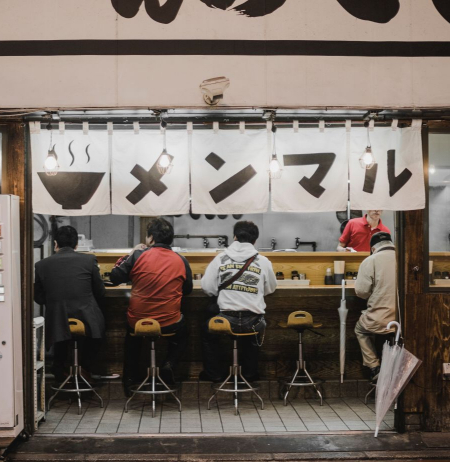
Instead of using spoons, it is customary to sip soup straight from the bowl. Although it might be weird for those used to spoons, the only tool you need to eat traditional Japanese food is chopsticks in Japan.
It’s normal to slurp when eating noodles
In Japan, if you go to a ramen shop, you’ll be greeted by the sounds of everyone slurping their noodles. Although this is considered rude in the West, it is welcomed in Japan.
Japanese people think that it is the best way to enjoy hot noodles and show appreciation for the food.
Bento boxes are a popular & portable lunch
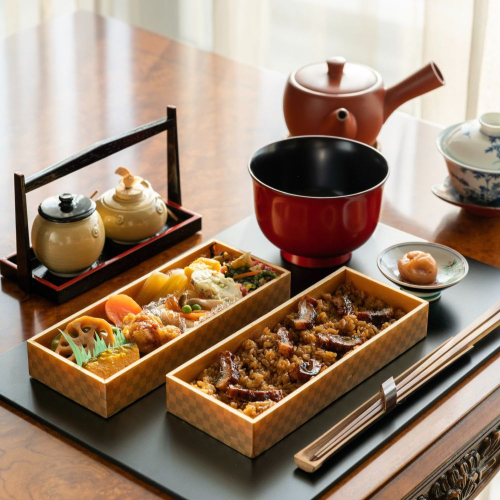
In Japan, you’ll notice that many people either buy or carry around bento boxes.
Bento boxes are special containers that usually contain a well-balanced meal of rice and side dishes.
If you go to a convenience store you’ll find pre-made bento boxes.
Parents will often pack homemade bento boxes for their kids so that they can eat a well-balanced and healthy meal outside of the house.
Instead of a Western lunch box of a sandwich with fruit, the Japanese have a long tradition of lunch boxes.
Tempura was introduced by the Portuguese
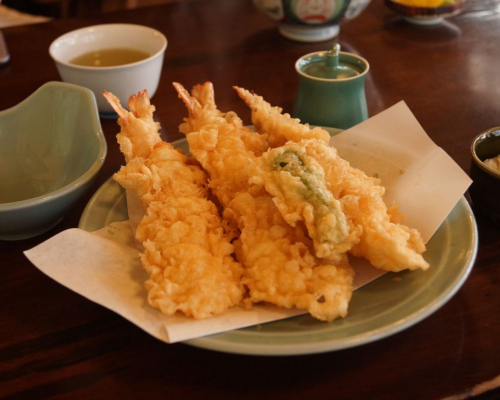
This is an interesting food fact because tempura is such a big part of Japanese cuisine.
Tempura is a dish where fresh vegetables and seafood are coated in a thin layer of batter and fried. It is eaten with salt or dipped in a special sauce.
Tempura has origins in 1660 when Portuguese missionaries introduced a cooking technique where food was coated with flour and fried. This led to the development of tempura.
Today, tempura can be found all over Japan and there are even Michelin-starred tempura restaurants.
Eating etiquette is important
Eating etiquette is extremely important for Japanese people because it shows respect for the food and for the person who made it.
In particular, the way that you use chopsticks can be crucial because it can be rude if you touch chopsticks with someone or if you stick them into your rice.
Another example of eating etiquette is that traditionally leaving grains of rice stuck to the bowl was also considered bad manners.
Pufferfish is considered a delicacy
In Japan, pufferfish is considered a delicacy and prized food.
The preparation of the pufferfish requires a highly skilled chef because if it is not cut properly it could be poisonous.
The pufferfish is either sliced thinly into sashimi or used as an ingredient in a hot pot.
Japanese cuisine is recognized by UNESCO
Washoku or traditional Japanese cuisine was recognized by UNESCO as a cultural heritage in 2013.
Traditional Japanese cuisine features fresh and seasonal ingredients as well as a special cooking methods spanning generations.
The basic style of eating rice with side dishes and soup is also a factor in the healthiness of the food.
Raw horse meat is eaten like sashimi
Horse meat is eaten raw in Japan similar to sashimi and it is served with horseradish and soy sauce.
Its flavor is considered mild and slightly sweet.
You’ll find this dish at some traditional Japanese-style bars called Izakaya.
Regional differences in flavors between North and South
An interesting fact about Japanese food is that the flavor can vary depending on whether you’re in the north or the south.
Similar dishes will be significantly sweeter in the south compared to the north.
For example, there is a difference in their preference for miso, a fermented soybean paste used to make soup.
Southern Japan prefers to eat white miso which is sweeter, and northern Japan eats saltier red miso.
The Japanese have their special version of curry
You might be surprised to find out that Japan has its version of curry that they call curry rice.
It was originally brought to Japan by the British during the Meiji era.
Because it was not directly from India, the Japanese curry developed from British curry suited for Japanese tastes.
It is typically mild in flavor and less spicy.
Japanese curry can be found inside of bread, served with fried pork, and even turned into a noodle soup.
Department stores have some of the best food markets
If you have a chance to go to Japan, make sure not to miss the department store basements.
They have one of the best selections of foods from sweets, lunch boxes, and pastries.
These department store food markets, also have a special sale before closing where many of the foods become discounted.
Most Japanese people own a special frying pan to cook egg
Many Japanese households own a special rectangular frying pan for making Japanese egg omelets called dashimaki tamago.
These omelets are in the shape of a rectangle so that it has a pleasing shape when cutting them in slices.
Tofu can be found in many varieties and forms

Tofu is a staple ingredient in Japanese cuisine and it can be found in various forms and firmness.
The softest tofu is usually eaten delicately almost like a pudding with soy sauce, freshly chopped green onions and dried bonito flakes.
The firm tofu will be found inside stir-fried dishes so that they retain their shape.
Tofu can also be fried to form aburaage which is a popular ingredient inside of miso soup. It can also be freeze dried to become koya dofu turning into a sponge-like texture.
Japanese Western food is known as “Youshoku”
Youshoku is another type of Japanese food that is a fusion of traditional Japanese and Western flavors.
Japanese people tend to think that youshoku is a Western food but it is quite different from how it is eaten in the West.
For example, if you go to an Italian restaurant in Japan you might find a spicy pollack roe pasta which is a traditional Japanese ingredient.
Kaiseki ryouri is a traditional Japanese multi-course meal
If you’re looking for a high-end Japanese meal, kaiseki ryouri is not to be missed.
It is a multi-course meal in small portions similar to French fine dining. Each ingredient is carefully thought out and seasonal with an importance on presentation.
Conclusion & Back to You
Now you know about some Japanese food facts.
Are there any others missing from this list?
What are your favorites? Which ones were you surprised by?
Leave a comment below.
Team IJ


